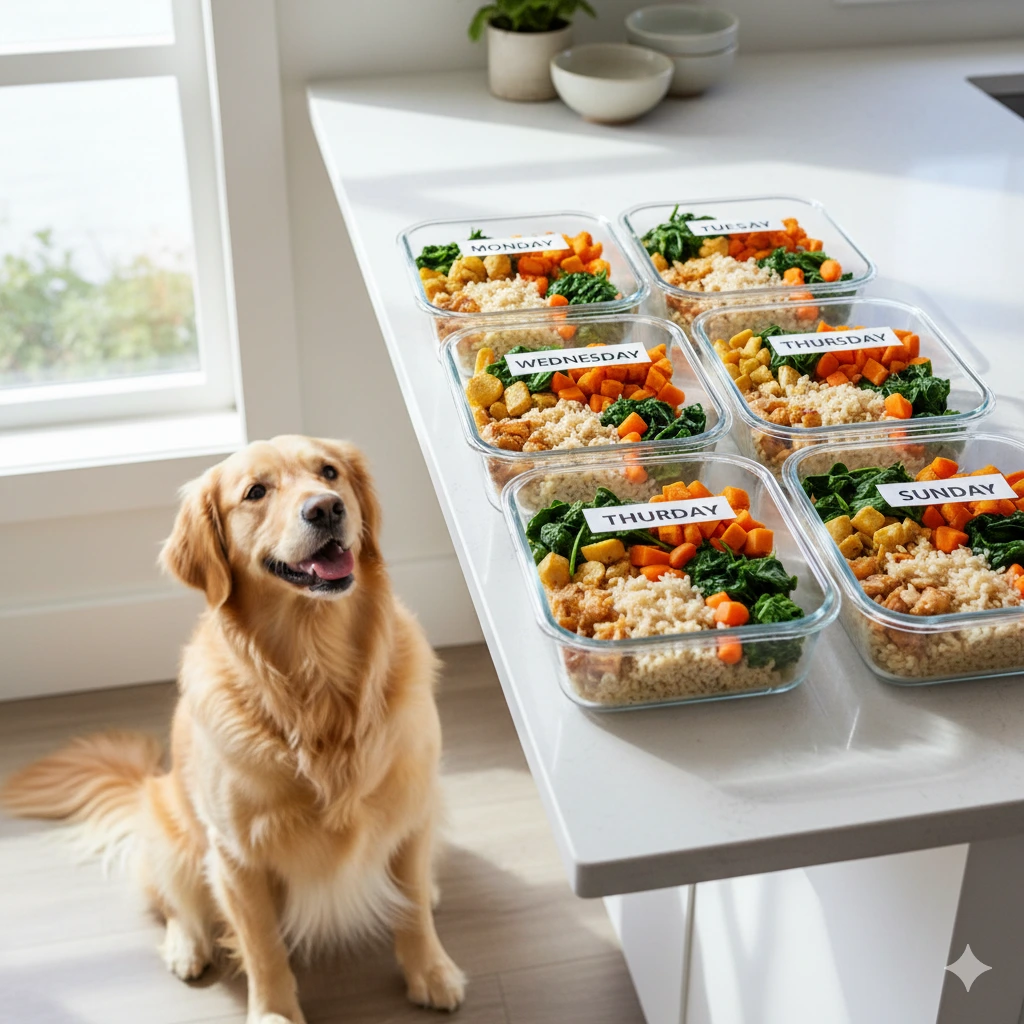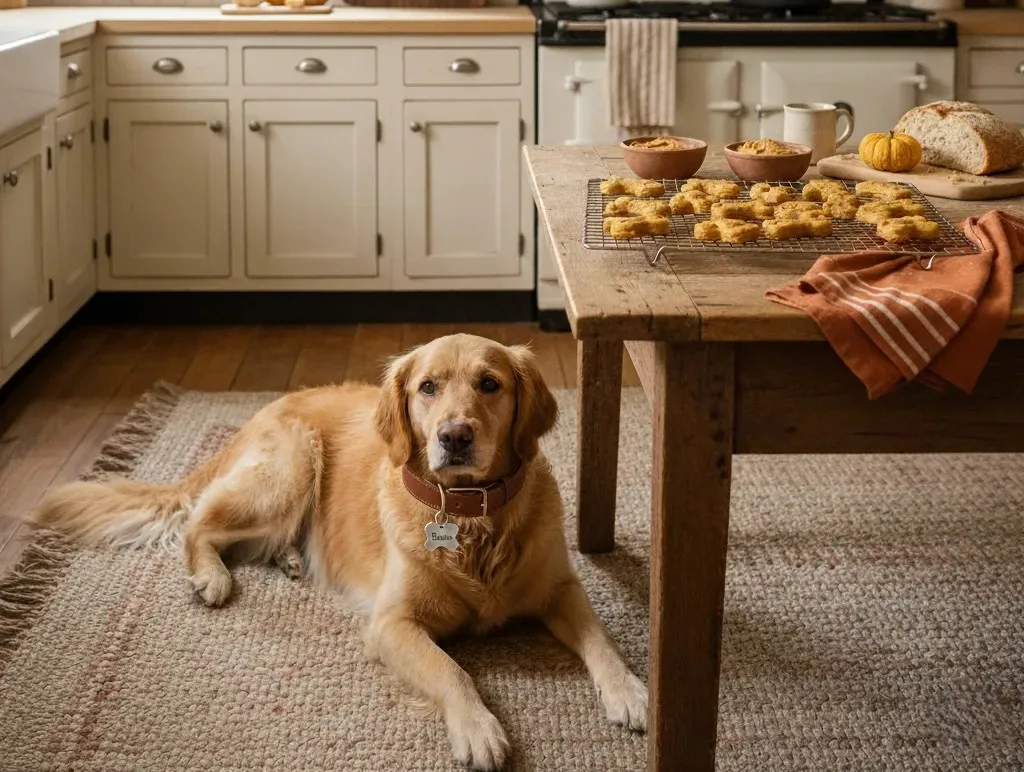If you’ve ever opened your dog’s food bag and wondered what’s really inside, you’re not alone. More and more pet parents are turning to meal prep for dogs to ensure their furry friends enjoy fresh, healthy, and balanced meals every day. Just like humans, dogs thrive on nutritious, well-planned diets — but preparing a week’s worth of food might sound overwhelming. Don’t worry! With the right approach, a few smart strategies, and help from trusted brands like Pawma’s Kitchen, you can make meal prep simple, efficient, and fun.
Why Meal Prep for Dogs is Becoming Popular
Pet owners today are more conscious than ever about what they feed their pets. Many commercial foods contain preservatives, fillers, and artificial flavors that can affect a dog’s digestion and long-term health. Homemade and freshly prepared dog meals offer transparency and quality — you know exactly what your dog is eating.
Meal prepping for your dog not only saves time but also ensures that every meal is portioned correctly and nutritionally balanced. It’s the perfect solution for busy pet parents who still want to provide the very best for their companions.
Understanding What a Balanced Dog Meal Looks Like
Before you start prepping, it’s essential to understand what your dog’s body needs. Dogs require a balance of protein, carbohydrates, healthy fats, fiber, vitamins, and minerals to stay healthy.
The Key Components of a Balanced Dog Meal
- Protein: Supports muscle growth and repair. Choose lean meats like chicken, turkey, beef, lamb, or fish.
- Carbohydrates: Provide energy. Opt for brown rice, oats, sweet potatoes, or quinoa.
- Healthy fats: Promote skin health and brain function. Include small amounts of fish oil, flaxseed oil, or olive oil.
- Vegetables and fruits: Supply vitamins, minerals, and fiber. Carrots, spinach, pumpkin, blueberries, and green beans are great choices.
- Calcium and supplements: Add dog-safe calcium sources like ground eggshells or vet-approved supplements if needed.
If you’re unsure about nutrient balance, consult your veterinarian or a pet nutritionist before finalizing your recipes.
Step-by-Step Guide to Dog Meal Prep
1. Plan the Menu
Start by planning your dog’s weekly meals. Choose two to three base proteins and pair them with different vegetables and grains for variety. For example:
- Chicken with brown rice and carrots
- Beef with sweet potatoes and peas
- Fish with quinoa and spinach
This variety keeps your dog interested while providing a range of nutrients.
2. Calculate Portions
The amount your dog needs depends on their size, age, breed, and activity level. Generally, dogs require about 2–3% of their body weight in food per day. Always check with your vet to determine the correct calorie intake for your dog.
3. Cook in Batches
Batch cooking saves time. Steam or boil the vegetables, cook the grains, and lightly cook meats to retain nutrients. Avoid adding seasoning, salt, or oil — dogs don’t need them and some can be harmful. Once cooked, allow everything to cool before dividing into portions.
4. Portion and Store
Use airtight containers or freezer-safe bags to store prepped meals. Label them with dates to keep track of freshness.
- Store 3–4 days’ worth of food in the refrigerator.
- Freeze the rest and thaw as needed.
This system ensures your dog always has a fresh, home-cooked meal ready to go.
5. Reheat Safely
When reheating frozen food, warm it gently — never serve it hot. Avoid microwaving in plastic containers. A quick warm-up on the stove or in a heat-safe bowl works best.
Tips to Make Meal Prep Easier
Create a Routine
Pick one day a week — like Sunday — as your dedicated meal prep day. Consistency makes it easier to plan shopping, cooking, and storage.
Keep It Simple
You don’t need elaborate recipes. Dogs love simple, fresh food. Focus on quality ingredients rather than fancy dishes. A mix of lean protein, vegetables, and healthy grains is more than enough.
Use Safe Ingredients Only
Never include harmful foods like onions, garlic, grapes, raisins, chocolate, or xylitol. Research or check with your vet if you’re unsure about a new ingredient.
Invest in Good Containers
Stackable glass containers or silicone pouches make storage easy and eco-friendly. Clear containers help you quickly see what’s inside.
Add Variety Over Time
Just like humans, dogs appreciate variety. Rotate between protein sources and veggies every few weeks to keep meals interesting and nutritionally balanced.
Common Mistakes to Avoid
- Skipping supplements: Homemade food often lacks certain vitamins or minerals, especially calcium and essential fatty acids. Always use vet-approved supplements.
- Overfeeding: Even healthy food can lead to weight gain if portions are too large. Measure carefully.
- Not consulting a vet: Every dog is different. What works for one may not suit another’s health condition or metabolism.
- Using leftovers: Human leftovers can contain seasoning or oils unsafe for dogs. Stick to pet-safe ingredients only.
Pawma’s Kitchen: Making Dog Meal Prep Easy
If you love the idea of feeding your dog fresh meals but don’t have time for cooking every week, Pawma’s Kitchen offers the perfect solution. Their ready-to-serve dog meals are crafted from fresh meat, vegetables, and natural ingredients, without preservatives or fillers. Each recipe is carefully formulated by pet nutrition experts to meet your dog’s daily nutrient needs.
With Pawma’s Kitchen, you can enjoy the benefits of homemade nutrition and convenience — no chopping, cooking, or portioning required. It’s a time-saving way to give your pet the best of both worlds: fresh, healthy, and balanced meals with zero stress.
Signs Your Dog Is Thriving on Fresh Meals
After switching to homemade or fresh-prepped meals, you’ll likely notice:
- Shinier coat and healthier skin
- More consistent energy levels
- Smaller, firmer stools
- Better digestion and reduced allergies
- A happier, more satisfied pup at mealtime
These are all signs that your dog’s body is benefiting from real, nutrient-dense food instead of processed kibble.
Final Thoughts
Meal prep for dogs doesn’t have to be complicated or time-consuming. With a bit of organization and commitment, you can provide your dog with wholesome, balanced, and delicious meals all week long. Whether you cook everything from scratch or rely on trusted fresh meal brands like Pawma’s Kitchen, what matters most is feeding your dog food made with love, quality ingredients, and care.
A few hours of prep can lead to a lifetime of better health, wagging tails, and joyful mealtimes. After all, your dog isn’t just a pet — they’re family, and they deserve to eat like it too.



